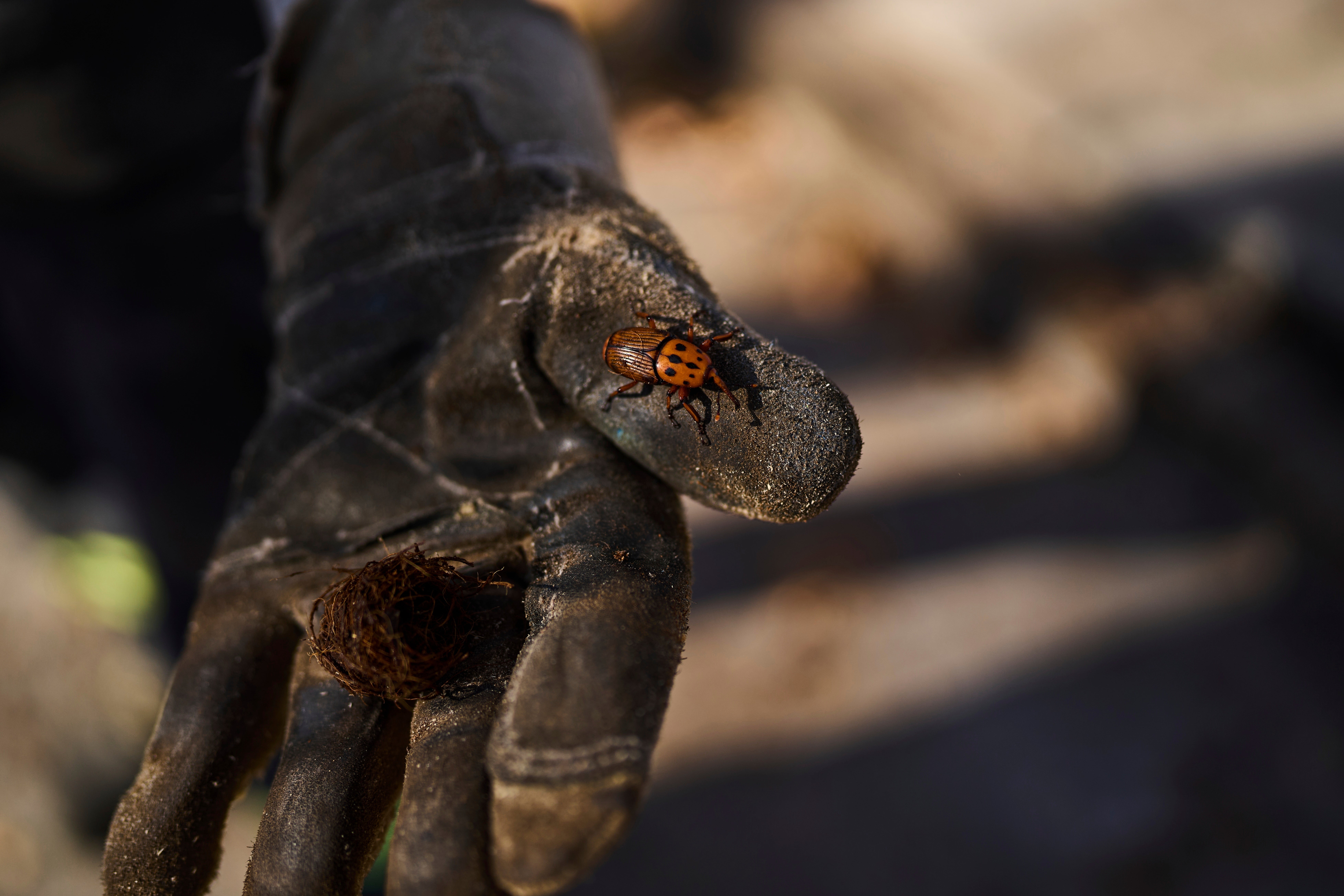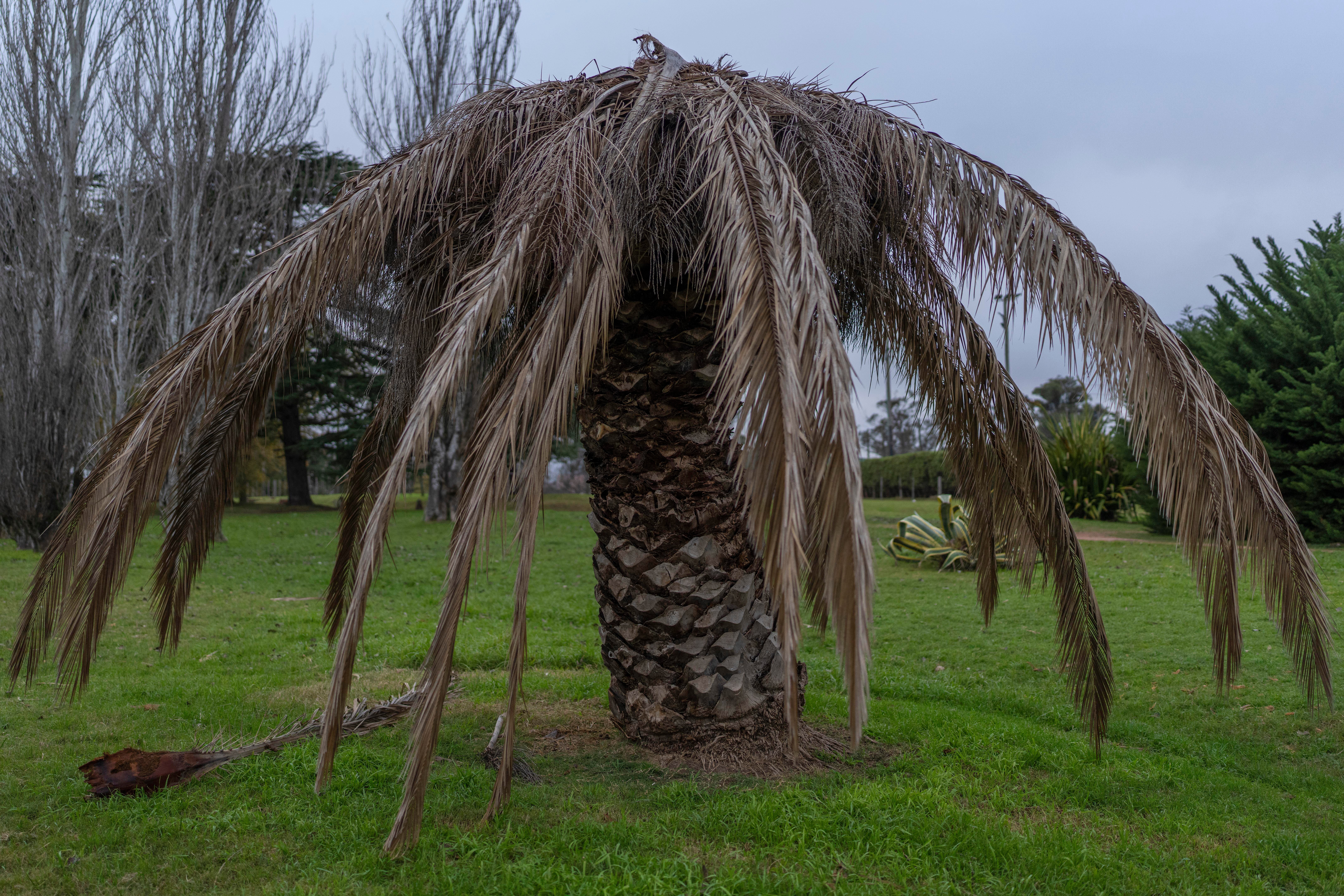
Uruguay's iconic palm trees, symbols as integral to the nation's identity as olive groves are to Greece or cherry blossoms to Japan, are facing a devastating onslaught.
A tiny, 5-centimetre (2-inch) long adversary, the red palm weevil, is behind the ruthless attack on these treasured trees, which line Montevideo's extensive sidewalks and grace the upscale Atlantic resorts of Punta del Este.
Since its unexplained arrival from Southeast Asia in 2022, the pest has devoured thousands of palms across the small South American country.
The tell-tale signs are drooping fronds, followed by holes in the trunk, ultimately leading to the tree's collapse.
Despite the widespread destruction transforming municipal landscapes, authorities are only now beginning to acknowledge the severity of the threat, as fears mount that Uruguay's beloved palms could be entirely eradicated.
“We are late in addressing this,” Estela Delgado, the national director of biodiversity at Uruguay's Ministry of Environment, acknowledged last month. “But we are doing so with great commitment and seriousness.”

The insect and its devastating impact can be found in 60 countries around the world but nowhere else in South America.
Authorities first detected it in the town of Canelones, bordering Montevideo, where the insect killed more than 2,000 palm trees in less than a month.
Weevils quietly wreak destruction by boring through the open scars of pruned palms and laying hundreds of eggs inside. When larvae hatch, they tunnel through trunks and eat up the trees’ internal tissue. Death strikes within weeks.
The Uruguayan government set up a task force to combat the plague in March. In May, Environment Minister Edgardo Ortuño declared the fight against the red palm weevil “a national priority."
As of this year, the red bug has proliferated in eight of the country's 19 regions, including Montevideo. Half of the capital's 19,000 palm trees have been infected, estimates Gerardo Grinvald, director of pest control company Equitec, which helps authorities combat the bug.
The insect first attacks decorative Canary palms, the tree in so many pictures of Uruguay’s sunny landscape, before moving onto its date palms.

“It’s an invisible pest,” Grinvald said, explaining the challenge of identifying an infestation when it starts. As a result, landowners fail to isolate and quarantine their trees, fueling the weevil's crawl across the country.
The Montevideo municipality this year earmarked $70,000 for chemical pesticide sprays and insecticide injections meant to kill bugs inside infested trunks, with the goal of saving some 850 trees in the city’s prominent Parque Rodó, a scenic urban park along the coast.
In the southeast corner of Uruguay, home to Punta del Este, a beachy, palm-fringed haven for jet-set elites from all over the world, authorities recently allocated $625,000 for efforts to dispose of infected trees and lure weevils away from affected areas with pheromone traps and other methods.
“We are losing our palm trees,” lamented Montevideo resident Rafael dos Santos as he walked his dog in Parque Rodó. “They are historic in Uruguay, and a part of us.”
As the weevil's march continues unabated, authorities now fear native trees of Uruguay's UNESCO biosphere reserve bordering Brazil will fall victim next, potentially facilitating the spread of the parasite across an unprepared continent.
Photos show emotional music fans paying tribute to Ozzy Osbourne
Annuals are the forgotten native plants. Here are 7 worth adding to the garden
Rock star offers support to Scots brothers rowing across Pacific
Trump told name ‘appears in Epstein files,’ report says: Live
Filth, rats and fear of reprisals: Life inside Ghislaine Maxwell’s prison
Trump’s under-fire AG Pam Bondi skips human trafficking summit over medical issue







